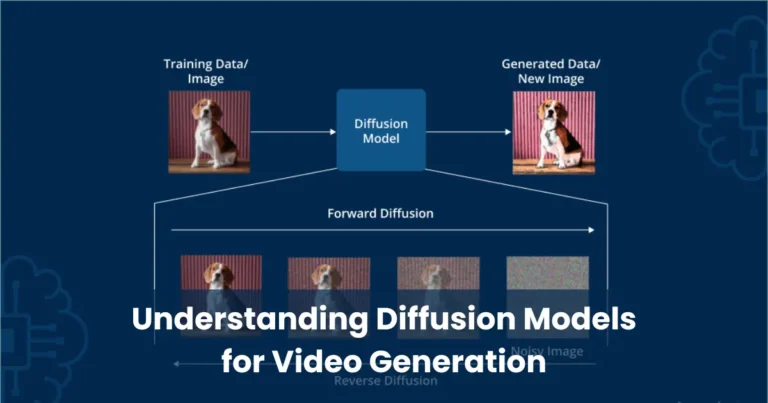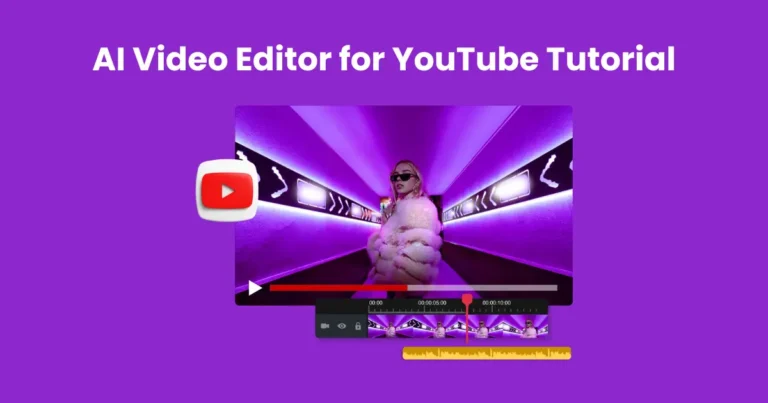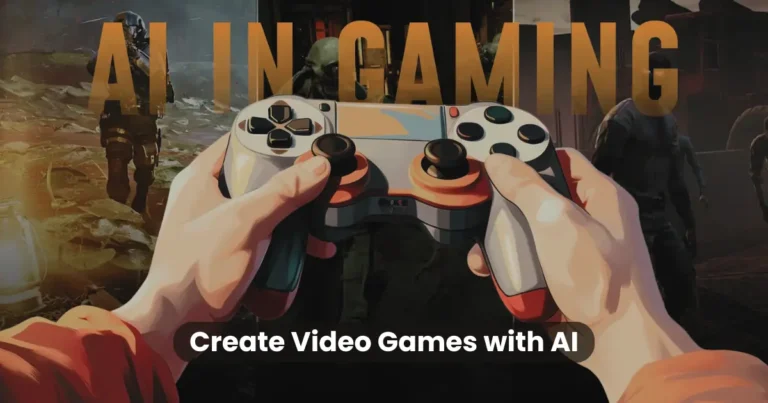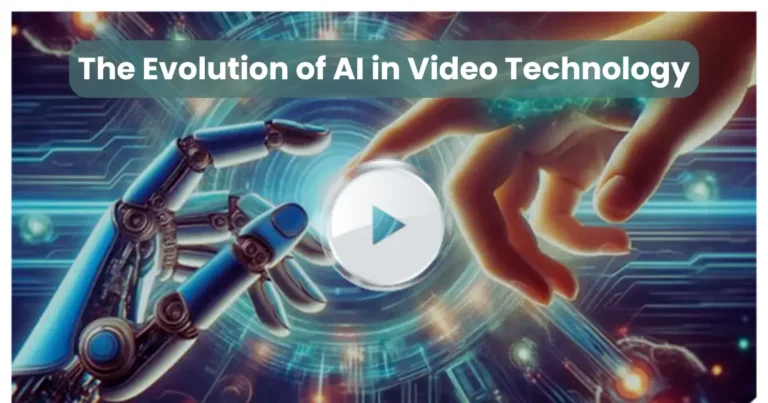The Future of Storytelling with AI Video
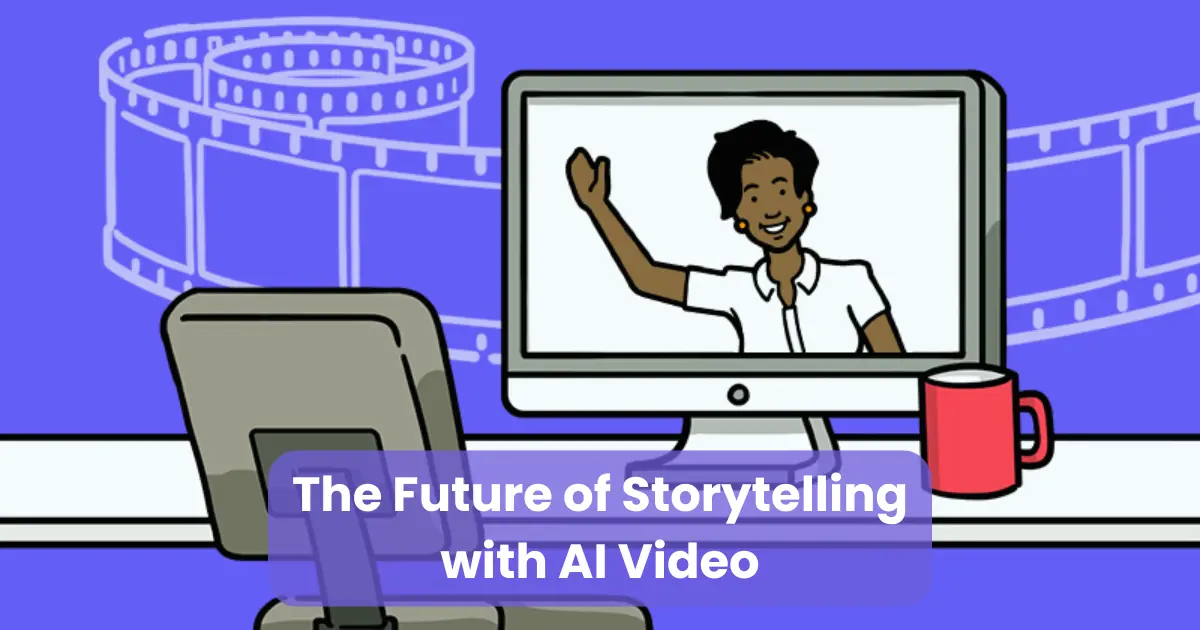
Contents
- 1 The Role of AI in Personalizing Content
- 2 Ethical Considerations of AI in Storytelling
- 2.1 1. Bias and Representation in AI-Generated Content
- 2.2 2. Authenticity and Transparency
- 2.3 3. The Potential for Manipulation
- 2.4 4. Ownership and Copyright Issues
- 2.5 5. The Impact on Employment and Creativity
- 2.6 6. Manipulation of Emotions and Sentiment
- 2.7 7. Cultural Sensitivity in AI Storytelling
- 3 AI Video and the Future of Entertainment
- 4 Challenges of Integrating AI in Storytelling
The future of storytelling with AI video holds exciting prospects for transforming how narratives are created and consumed. This article explores AI’s role in video production, creativity, and content personalization. It also addresses challenges, ethical concerns, and future human-AI collaboration in storytelling.
In this article, we explore the impact of AI on storytelling its rise in video production, role in creativity, potential for personalization, and key ethical considerations. We’ll also highlight the challenges of integrating AI and the exciting opportunities it offers for the future of entertainment.
The Role of AI in Personalizing Content
In today’s digital landscape, personalized content is more important than ever. The rise of artificial intelligence (AI) has revolutionized content personalization, offering a game-changing advantage for businesses, creators, and consumers. AI is transforming content delivery by ensuring that each viewer or user receives a unique and engaging experience. By harnessing the power of AI, companies can better understand their audiences, predict their needs, and provide content that resonates on a deeper level. Here’s a closer look at how AI is playing a critical role in personalizing content.
Understanding User Behavior Through Data Analytics
One of the primary ways AI personalizes content is through the analysis of vast amounts of user data. AI algorithms can track and interpret user interactions across various platforms, including websites, social media, apps, and streaming services. This data includes information such as browsing history, purchase behavior, search patterns, and even social interactions. By analyzing this data, AI can identify patterns and preferences, allowing content creators and businesses to develop more targeted and relevant content.
For instance, platforms like Netflix and YouTube use AI to study viewing habits and recommend content based on personal preferences. By analyzing past behavior, AI suggests movies, shows, or videos the viewer is likely to enjoy. As AI processes more data, its suggestions become increasingly accurate and personalized, keeping users consistently engaged with preferred content.
Dynamic Content Personalization
AI not only recommends content based on past behavior but also adapts it in real-time according to user preferences. This level of personalization ensures that the content evolves with the user’s changing tastes and interests. For example, AI-driven websites or platforms can adjust the layout, images, and messaging based on the individual’s previous interactions.
E-commerce websites, for instance, use AI to personalize product recommendations. By analyzing a user’s browsing history or purchase behavior, AI can recommend products that match their preferences, enhancing the shopping experience. Likewise, it can personalize ads and promotional content, displaying offers most relevant to their current interests and needs.
Enhancing Customer Engagement with AI Chatbots
Another way AI is personalizing content is through AI-powered chatbots. These virtual assistants can engage users in personalized conversations, offering recommendations, answering questions, and guiding them through various processes. Chatbots use natural language processing (NLP) to understand and respond to user queries, making interactions more intuitive and human-like.
For example, an AI-powered chatbot on a retail website can ask questions about a customer’s preferences and suggest products accordingly. Similarly, in the entertainment industry, AI chatbots can recommend shows or movies based on the user’s previous choices or preferences. By providing real-time, personalized assistance, AI chatbots help enhance the overall user experience, leading to higher satisfaction and greater engagement.
Predictive Content Creation
AI not only personalizes delivered content but also predicts what will resonate with users in the future. By using predictive analytics, it analyzes trends, past behaviors, and data to forecast which content will engage a specific audience.
For example, content creators can use AI to identify which topics, formats, or themes will likely appeal to specific demographics. This is especially useful for marketers and advertisers aiming to stay ahead of trends and keep their content relevant. By leveraging AI’s predictive power, creators and businesses can deliver personalized, timely content that aligns closely with audience interests.
Content Curation for Social Media
AI is also making waves in the realm of social media content personalization. Platforms like Facebook, Instagram, and Twitter rely heavily on AI algorithms to curate the content that appears in users’ feeds. These algorithms factor in the user’s past interactions, post types they engage with, and the sentiment of their comments and shares.
For content creators and marketers, this presents a unique opportunity to tailor content specifically for social media audiences. AI can determine the best times to post, the content that will generate the most engagement, and strategies for growing a social media following. By analyzing user preferences and behaviors, AI helps curate content that feels personalized, boosting engagement and interaction.
AI-Driven Personalization in Advertising
One of the most powerful applications of AI in content personalization is in advertising. Traditional advertising often relied on broad demographic categories to target audiences. However, AI allows for hyper-targeted advertising based on individual user data, ensuring that ads are relevant and timely.
AI-driven advertising platforms analyze user behavior, location, purchase history, and social interactions to serve ads tailored to individual interests. For instance, if a user often browses travel websites or searches for vacation deals, AI can deliver targeted ads for airlines, hotels, or travel agencies with relevant offers. This personalized advertising approach boosts conversion rates and enhances the user experience by ensuring ads are both relevant and non-intrusive.
AI-Enhanced User Experience in Gaming
In the gaming industry, AI is revolutionizing content personalization to enhance the user experience.Many modern video games use AI to adapt the gameplay to the player’s skill level and preferences. For instance, AI in a game can adjust the difficulty in real time based on the player’s performance. It can also create in-game content, such as quests, challenges, or characters, based on the player’s style and past choices for a personalized experience.
AI also allows for dynamic storytelling in games, where the narrative can change based on the player’s actions and decisions. This level of personalization makes the game feel unique for each player, adding to the overall engagement and replayability of the game.
Ethical Considerations of AI in Storytelling
As AI becomes a powerful tool in the creative industries, its role in storytelling raises ethical questions. While it transforms how stories are created and experienced, it also presents challenges that require careful consideration. Issues like bias in AI-generated narratives and concerns about content authenticity need to be addressed by creators, consumers, and stakeholders. This article explores key ethical considerations surrounding AI in storytelling.

1. Bias and Representation in AI-Generated Content
One of the most significant ethical concerns in AI-driven storytelling is the potential for bias. AI systems learn from existing data, and if the data contains biases such as those based on gender, race, or ethnicity AI may reflect those biases in the stories it generates.
For example, training an AI on Western media data often favors Western tropes and norms, ignoring diverse voices. This can lead to content that lacks authenticity and fails to represent a broad range of cultures and experiences.
Ethical storytelling requires developers to train AI systems on diverse, representative datasets to avoid reinforcing harmful stereotypes or marginalizing underrepresented groups. Creators must ensure their AI tools produce content that authentically reflects the diversity and complexity of the human experience.
2. Authenticity and Transparency
AI-generated content, whether it’s a script, a character, or an entire film, often raises questions about authenticity. As AI advances, it creates content that closely resembles human creativity, making it difficult for audiences to tell whether a story came from a machine or a human.
The ethical challenge here lies in transparency. Audiences may feel misled if they realize a story they believed was human-created was actually generated by an algorithm. This has led to a growing call for transparency in AI storytelling, urging creators to disclose how much AI contributed to the production of content.
Moreover, there’s a concern that the overuse of AI in storytelling could diminish the value of human creativity. If AI-generated content becomes indistinguishable from human-generated stories, it might lead to a devaluation of original, human-authored works. Creators must consider how to balance the use of AI with maintaining the integrity and authenticity of their work.
3. The Potential for Manipulation
AI’s ability to manipulate and influence narratives presents another ethical dilemma. Deepfake technology, for example, uses AI to create hyper-realistic fake videos and audio recordings, often involving real people without their consent. This capability raises serious ethical concerns regarding privacy, consent, and the potential for misinformation.
In storytelling, creators can misuse AI-generated characters, voices, and narratives that mimic real people or events to spread false information or sway public opinion. For example, AI might create convincing fake news or lifelike documentaries that are completely fabricated. The ethical challenge lies in ensuring responsible use of AI in storytelling and putting safeguards in place to prevent harm to individuals or society.
4. Ownership and Copyright Issues
As AI takes a more prominent role in content creation, questions of ownership and copyright emerge. If an AI system generates a script, artwork, or video, who owns the intellectual property? Is it the creator who used the AI tool, the developer of the AI software, or the AI itself?
This issue is especially complex because existing copyright laws were built around human authorship. AI-generated content falls into legal gray areas, as it’s unclear whether current frameworks can recognize AI as a legitimate creator. This poses challenges for both creators and legal professionals, as they navigate how to assign ownership and rights to AI-generated works.
Ethically, it’s important to ensure creators receive fair compensation, whether the work is human-made or AI-assisted. Clear laws and guidelines must define ownership and copyright for AI-generated content.
5. The Impact on Employment and Creativity
AI’s growing influence in storytelling also raises concerns about the future of jobs in creative industries. As AI generates high-quality content, human storytellers, writers, editors, and other creatives may face the risk of their roles being replaced or diminished by machines.
While AI can boost creativity by automating tasks and offering new storytelling methods, it may also displace workers in writing, animation, editing, and other fields. This could reduce demand for human talent in the creative sector, leading to economic instability for those relying on artistic skills for work.
To address these concerns, it is important to think about how AI can augment rather than replace human creativity. Ethical storytelling should focus on how AI can empower creators to do more with their talents, rather than limit their opportunities. Additionally, organizations should implement reskilling and upskilling programs to help creative professionals adapt and thrive in an AI-driven landscape.
6. Manipulation of Emotions and Sentiment
AI’s ability to analyze and manipulate human emotions presents both opportunities and challenges in storytelling. AI can craft narratives designed to evoke specific emotional responses in viewers—such as happiness, fear, sadness, or excitement. While this can enhance the impact of a story, it also raises ethical concerns about emotional manipulation.
For example, AI might create content that exploits vulnerable audiences or manipulates emotions for commercial gain. This is especially concerning in advertising, political campaigns, or other areas where emotional responses can influence decision-making.
Storytellers must be mindful of the ethical implications of using AI to manipulate emotions. They should prioritize transparency, respect for the audience’s autonomy, and the responsible use of emotional triggers to avoid crossing ethical lines.
7. Cultural Sensitivity in AI Storytelling
AI is often trained on global data sets, which can include diverse cultural references, values, and norms. However, without careful attention to cultural sensitivity, AI-generated stories could inadvertently offend or misrepresent certain cultures, traditions, or communities.
For example, an AI trained on predominantly Western sources may struggle to grasp the nuances of stories from other cultures, leading to misinterpretations or stereotypes. Creators must collaborate with cultural experts to ensure AI-generated content is respectful and inclusive.
AI Video and the Future of Entertainment
The entertainment industry has always been at the forefront of technological innovation, and with the rise of artificial intelligence (AI), it’s poised for another major transformation. AI video technology, in particular, is becoming an increasingly powerful tool for content creation, consumption, and distribution. From enhancing storytelling to revolutionizing production workflows, AI is shaping the future of entertainment in ways that were previously unimaginable. This article explores the various ways AI video is impacting the entertainment landscape and what the future holds.

1. AI-Driven Content Creation
AI’s ability to generate video content autonomously is one of the most exciting developments in the entertainment industry. With advancements in machine learning, AI can now assist in the creation of videos, from scriptwriting to animation and even acting. This opens up new possibilities for filmmakers, video game developers, and content creators.
AI algorithms can analyze vast amounts of existing video content, identifying patterns, structures, and trends. This data allows AI systems to create new, unique content based on predetermined themes or genres. For example, AI can generate short films, promotional videos, or even music videos with little to no human intervention. These tools can be especially useful for indie filmmakers or small studios that lack the resources for high-budget productions.
Moreover, AI video tools can help automate repetitive tasks like editing, color correction, and sound design. By streamlining these aspects of the production process, creators can focus more on the artistic side of their work, reducing the time and cost involved in video production.
2. AI in Personalized Entertainment
As AI technology continues to advance, it’s transforming how content is delivered and consumed. Streaming services like Netflix, YouTube, and Disney+ already leverage AI to personalize recommendations based on user preferences and viewing history. But the future of AI video goes beyond simple recommendations. AI will enable even more tailored experiences, where content is personalized in real time to fit the viewer’s mood, interests, and context.
For instance, AI could analyze facial expressions or biometric data to adjust the video’s content accordingly. If a viewer is smiling, the system might suggest more lighthearted content, while if the viewer shows signs of sadness or boredom, it could recommend something more engaging or uplifting. This level of personalization could extend to virtual reality (VR) or augmented reality (AR), where AI adapts the experience based on real-time interactions and feedback.
The ability to personalize content at this level not only enhances viewer engagement but also fosters deeper emotional connections between audiences and the stories they consume.
3. Enhancing Storytelling with AI
AI has the potential to revolutionize storytelling in ways that were previously limited to science fiction. One of the most exciting applications of AI in entertainment is its ability to craft dynamic, interactive narratives. By analyzing viewer choices and behaviors, AI can create adaptive storylines that change based on individual preferences, making the viewer an active participant in the story.
This concept is already being explored in video games, where AI-driven characters and story arcs adapt based on the player’s decisions. However, the integration of AI in traditional forms of media, such as film and television, is not far behind. AI-powered interactive films, like Netflix’s Bandersnatch, allow viewers to make decisions that influence the storyline, but the future holds even more potential. AI could enable entirely new forms of interactive entertainment where viewers engage with characters and the plot in real-time, creating a truly personalized and immersive experience.
Additionally, AI can help create more nuanced narratives by analyzing data from past films, books, and shows. This can guide writers, directors, and producers in identifying storytelling trends, themes that resonate with audiences, and effective narrative structures for emotional impact.
4. AI and Virtual Performers
In recent years, AI-generated virtual performers—digital characters that can act, sing, and dance have gained prominence. Virtual stars like Hatsune Miku, a Japanese holographic pop star, and the digital rapper FN Meka are blurring the lines between reality and digital creation. AI can generate highly realistic virtual actors who can perform in films, music videos, and live performances.
These AI performers are not limited by the constraints of human bodies and can be programmed to perform complex movements or scenes that would be impossible for human actors. In addition, AI performers can be constantly available, eliminating the need for long shooting schedules and time-consuming rehearsal processes.
AI-generated characters are also creating new opportunities for cross-cultural collaborations. Virtual performers can easily be customized to appeal to different cultures and languages, allowing for more globalized content. This could dramatically change how the entertainment industry creates and markets films, TV shows, and music worldwide.
5. AI in Animation and Visual Effects (VFX)
AI is also making waves in the world of animation and visual effects. Traditional animation and VFX workflows are time-consuming and labor-intensive, but AI is helping to automate many of these processes. AI can assist in everything from creating realistic character animations to generating complex visual effects that would take months to produce manually.
For instance, AI algorithms can be used to generate realistic facial expressions and movements for animated characters, based on input from voice actors or performance capture data. This significantly reduces the time spent manually animating each frame while maintaining high levels of realism.
In the realm of VFX, AI can help automate tasks such as background replacement, motion tracking, and even the creation of entirely new visual elements. This allows visual effects artists to focus on more creative aspects of their work, rather than getting bogged down by repetitive tasks.
Furthermore, AI-driven tools are also making it easier to generate realistic CGI environments, which has enormous potential for films, television shows, and video games. By analyzing real-world data, AI can help create virtual landscapes that feel entirely authentic, whether it’s a futuristic city or a prehistoric jungle.
6. AI-Powered Distribution and Marketing
Once content is created, the next challenge is getting it to the right audience. AI is revolutionizing the distribution and marketing of entertainment by analyzing user behavior and predicting which content will resonate with specific demographics. This data-driven approach allows marketers to create highly targeted campaigns, ensuring that the right content is shown to the right people at the right time.
AI can also be used to optimize content placement on streaming platforms. By analyzing viewing patterns and trends, AI can help content distributors determine when and where to release specific videos to maximize engagement and viewership.
Moreover, AI-powered chatbots and virtual assistants are changing how audiences interact with entertainment content. These AI tools can provide personalized recommendations, answer questions, and even engage with fans on social media platforms, enhancing the overall experience and fostering deeper connections with audiences.
7. Ethical Considerations of AI in Entertainment
While AI’s potential in entertainment is vast, it also raises important ethical questions. One major concern is the authenticity of AI-generated content and the potential for misleading audiences. As AI becomes more adept at mimicking human creativity, it may become difficult for viewers to distinguish between human and AI-generated works, raising questions about transparency and credit.
Additionally, the use of AI-generated performers and characters brings up issues of intellectual property and fair compensation. Who owns the rights to an AI-created performer? How do we ensure that AI tools are not misused to create harmful or misleading content?
The entertainment industry must establish ethical guidelines and regulations to ensure responsible and transparent AI use, safeguarding creators, performers, and audiences.
Challenges of Integrating AI in Storytelling
While AI’s role in transforming storytelling is undeniably exciting, it also brings several challenges that must be addressed to fully harness its potential. The integration of AI in storytelling is a complex process that requires careful consideration of various factors, including creativity, ethical concerns, technical limitations, and the preservation of the human element in storytelling. This article explores some of the key challenges involved in integrating AI into the storytelling process and offers insights into how these hurdles can be overcome.

1. Lack of Emotional Depth
One of the primary challenges with AI in storytelling is the difficulty in replicating the emotional depth and nuance that human storytellers bring to their narratives. While AI can analyze vast amounts of data and identify patterns, it often lacks the ability to genuinely understand or replicate human emotions.
Storytelling is fundamentally about connecting with audiences on an emotional level, evoking empathy, joy, sadness, or excitement. Human writers and directors have the ability to draw on personal experiences, cultural context, and deep emotional understanding to create stories that resonate deeply with audiences. AI, however, is still limited in this respect. Although it can generate content based on pre-programmed rules or trends, the subtlety and richness of human emotion often elude it.
For AI-generated narratives to be truly effective, there needs to be an integration of emotional intelligence, something that is still in the early stages of development within AI technologies. It will take time and significant advances in AI to create stories that truly capture the human experience in a meaningful way.
2. Creativity Constraints
AI excels at data processing and pattern recognition, but creativity is where it faces limitations. Creativity often involves breaking established rules, thinking outside the box, and introducing unexpected or original elements that surprise and engage an audience. While AI can certainly assist in generating content and ideas, it tends to follow the patterns it has learned, which can lead to formulaic or predictable stories.
Human creativity thrives on intuition, experience, and the ability to take risks, all of which are challenging for AI to replicate. AI can certainly support and enhance the creative process by providing suggestions or automating repetitive tasks, but it cannot yet fully replace the innovation and originality that human storytellers bring to the table.
As AI continues to improve, it may be able to assist in creative brainstorming, but the role of human creators will remain essential in producing truly groundbreaking and unique stories.
3. Ethical Concerns
AI-driven storytelling raises significant ethical concerns. One major issue is the potential for AI to generate biased, offensive, or misleading content. AI algorithms learn from large datasets, which can carry inherent biases. For instance, if an AI model is trained on biased or discriminatory data, it may produce stories that perpetuate harmful stereotypes or reinforce societal inequalities.
Moreover, there are concerns about the ownership and authorship of AI-generated content. If an AI system creates a film or a story, who owns the rights to that content? Is it the developers of the AI, the users who prompted the AI, or the AI itself? These legal and ethical dilemmas are still being debated, and there are currently no clear regulations governing the ownership of AI-generated work.
Another ethical concern is the potential for AI to replace human jobs in the entertainment industry. While AI can automate certain tasks and enhance production processes, there is a fear that it could lead to job displacement, particularly for writers, animators, and other creative professionals.
To mitigate these concerns, developers must prioritize transparency, fairness, and inclusivity when designing AI systems, ensuring that these tools are used responsibly and ethically in the creation of content.
4. Overcoming Technical Limitations
Despite the rapid advancements in AI technology, there are still significant technical limitations when it comes to integrating AI into storytelling. For example, current AI models struggle with understanding and maintaining narrative coherence over long periods. While AI can generate short pieces of content or assist with specific scenes, maintaining a consistent, engaging story across an entire film, television series, or game can be difficult.
AI’s ability to understand context, continuity, and the flow of a complex narrative is still in its early stages. It often struggles with subtle elements like foreshadowing, plot twists, and character development. These aspects of storytelling are crucial for engaging the audience and keeping them invested in the story.
Additionally, generating high-quality visual effects and animations that seamlessly integrate with AI-driven storytelling is another technical challenge. While AI can assist with tasks like automating animation or improving rendering speed, achieving the level of quality expected in modern entertainment requires significant computing power and advanced algorithms.
To overcome these technical limitations, researchers and developers are working on improving AI’s ability to understand long-form narratives, maintain continuity, and generate high-quality content. However, it will likely take years of development before AI can fully master these complexities.
5. Audience Reception and Trust
The integration of AI in storytelling also presents challenges when it comes to audience reception. Many viewers may feel uncomfortable or distrustful of AI-generated content, particularly if they are unaware of how it was created. For example, a film or TV show generated entirely by AI might be met with skepticism, as audiences may question its authenticity and the creative intent behind it.
There is also the issue of transparency. If an AI is responsible for generating a piece of content, viewers may want to know who or what is behind the story they are consuming. The idea of AI replacing human creators can raise fears about the future of storytelling and the role of artists and writers in the industry.
Building trust with audiences will be key to the widespread acceptance of AI in storytelling. Creators must be transparent about how AI is used in the creative process and ensure that the final product resonates with viewers on an emotional and intellectual level.
6. Maintaining Human Touch in AI-Generated Stories
One of the most significant challenges of integrating AI into storytelling is preserving the human touch. Storytelling is, at its core, a deeply human endeavor. It is about sharing experiences, emotions, and ideas that reflect the complexities of life. While AI can assist in many aspects of storytelling, it cannot replace the human element that connects us to the stories we tell.
For AI to truly enhance storytelling, it must work in collaboration with human creators, rather than attempting to replace them. By combining the strengths of both human creativity and AI’s analytical power, storytellers can create narratives that are both innovative and emotionally resonant.
Conclusion
The future of storytelling with AI is filled with immense potential, offering groundbreaking advancements in how narratives are created, experienced, and shared. AI’s ability to personalize content, enhance creative processes, and streamline production is transforming the entertainment industry. However, embracing AI innovations requires addressing challenges like emotional depth, creativity, ethics, and limitations to preserve storytelling’s essence.
As AI advances, it’s set to play a key role in shaping entertainment. By blending AI’s analytics with human creativity, storytellers can craft personalized, emotionally rich narratives. The future of storytelling with AI will depend on human-machine collaboration, merging technology and art to push creative boundaries.
In this new era, AI-driven storytelling won’t just change how stories are told—it will transform how they’re experienced, opening up a world of exciting, limitless possibilities in entertainment.



